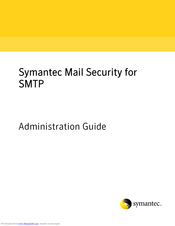Symantec Mail Security Manuals
Manuals and User Guides for Symantec Mail Security. We have 2 Symantec Mail Security manuals available for free PDF download: Administration Manual
Advertisement
Advertisement

